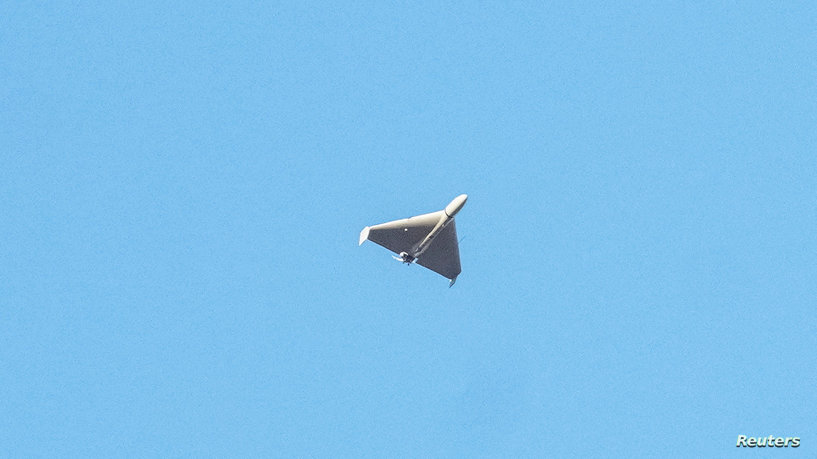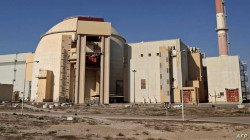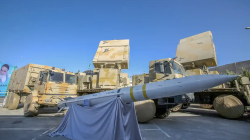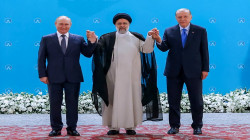Inside the Russian effort to build 6,000 attack drones with Iran’s help

Shafaq News / A recent report from an American media outlet, released on Friday, disclosed documents detailing a collaborative effort between Russia and Iran in the production of drones. The factory, situated in Russia, is said to utilize Iranian technology in the creation of the unmanned aerial vehicles (UAV).
This was Russia’s billion-dollar weapons deal with Iran coming to life in November, 500 miles east of Moscow in the Tatarstan region. Its aim is to domestically build 6000 drones by summer 2025 - enough to reverse the Russian army’s chronic shortages of UAVs, on the front line. If it succeeds, the sprawling new drone factory could help Russia preserve its dwindling supply of precision munitions, thwart Ukraine’s effort to retake occupied territory and dramatically advance Moscow’s position in the drone arms race that is remaking modern warfare.
Although Western officials have revealed the existence of the facility and Moscow’s partnership with Tehran, documents leaked from the program provide new information about the effort by two self-proclaimed enemies of the US -under some of the world’s heaviest sanctions- to expand the Kremlin’s drone program.
Altogether, the documents indicate that, despite delays and a production process that is deeply reliant on foreign-produced electronic components, Moscow has made steady progress toward its goal of manufacturing a variant of the Iranian Shahed-136, an attack drone capable of traveling more than 1,000 miles.
The documents show that the facility’s engineers are trying to improve on Iran’s dated manufacturing techniques, using Russian industrial expertise to produce the drones on a larger scale than Tehran has achieved and with greater quality control. The engineers also are exploring improvements to the drone itself, including making it capable of swarm attacks in which the UAVs autonomously coordinate a strike on a target.
Researchers who reviewed the documents pertaining to the production process at the request of The Post estimated that work at the facility in the Republic of Tatarstan’s Alabuga Special Economic Zone is at least a month behind schedule. The facility has reassembled drones provided by Iran but has itself manufactured only drone bodies, and probably for not more than 300 of the UAVs, the researchers concluded. Alabuga is unlikely to meet its target date for the 6,000 drones, they said.
Even so, David Albright, a former UN weapons inspector who helped lead the research team that studied the documents, said, “Alabuga looks to be seeking a drone developmental capability that exceeds Iran’s.”
The Post obtained the documents from an individual involved in the work at Alabuga but who opposes Putin’s invasion of Ukraine. The individual decided to expose details of the effort in the hope that international attention might lead to additional sanctions, potentially disrupting production and bringing the war to an end more quickly, the person told The Post.
“This was the only thing I could do to at least stop and maybe create some obstacles to the implementation of this project,” the person said, speaking on the condition of anonymity because of safety concerns. “It has gone too far.”
The documents, dating from winter 2022 to spring 2023, include factory-floor blueprints, technical schematics, personnel records, memorandums provided to Iranian counterparts and presentations given to representatives of Russia’s Defense Ministry on the status of the effort code-named “Project Boat.” The Russian-language news outlet protocol reported on some of the documents in July.
The team led by Albright and senior researcher Sarah Burkhard said the documents “appear authentic” and “go to great length to describe supply-chain procurement, production capabilities, manufacturing plans and processes, as well as plans to disguise and hide the production of Shahed drones.”
The research team found that the project faces challenges — including “doubt about its ability to reach its desired staffing levels” - but cautioned that Russia might be able to overcome those difficulties.
“Russia has a credible way of building over the next year or so a capability to go from periodically launching tens of imported Shahed-136 kamikaze drones against Ukrainian targets to more regularly attacking with hundreds of them,” Albright told The Post.
Albright said the disclosure of the records makes it difficult for Iran - which has publicly declared it is neutral in the war - to claim that it is not helping Moscow develop the ability to manufacture drones at Alabuga.
The Russian government and Alabuga did not respond to requests for comment from The Post. The Kremlin has dismissed reports that it is receiving assistance from Tehran on drones, saying that Russia relies on its own research and development.
Iran’s mission to the United Nations also did not respond to a request for comment.
While Russia has made breakthroughs in air defense and hypersonic missiles, its military was late to prioritize drone technology. To catch up, Moscow has had to turn to Iran, one of the few nations willing to sell it military hardware.
Last summer, Russia began receiving secret shipments of Iranian drones — many of them Shaheds - that were quickly deployed to prop up its flagging war effort, US and other Western officials have said.
Iran’s Shahed-136 - Russia calls the drone the Geran-2 - can carry a 118-pound explosive payload toward a target that is programmed in before launch. Because the drone is powered by a noisy propeller engine, some Ukrainians have dubbed it “the flying moped.”
Russia’s drones have struck targets deep inside Ukraine, degrading Kyiv’s precious air defenses and allowing Moscow to preserve its more expensive precision-guided missiles. The attacks, often targeting critical civilian infrastructure, have had a devastating impact on Ukraine’s war effort, knocking critical power grids offline and destroying grain stockpiles, according to Vladyslav Vlasiuk, an adviser to Ukrainian President Volodymyr Zelensky.
“Those drones are much cheaper to produce compared to the damage they cause, and this is the problem,” Vlasiuk told The Post.
In November, a Kyiv-based think tank became one of the first nongovernmental organizations to examine the wreckage from a Russian Geran-2 drone downed in Ukraine. It found that key parts - the motor and warhead - were produced by Tehran. “We knew the drone was from Iran,” said Gleb Kanievskyi, the founder of the StateWatch think tank.
That month, Iran acknowledged it had provided drones to Russia but said it had done so only before the start of the war.
In the past three months, Russia has attacked Ukraine with more than 600 of the self-detonating Shahed-136 drones, according to an intelligence assessment produced by Kyiv in July and obtained by The Post.
Conflict Armament Research, a weapons-tracking group based in Britain, examined two drones downed last month and concluded based on components it found that the Kremlin has started producing “its own domestic version of the Shahed-136.”
The Post reported in November that Russian and Iranian officials had finalized a deal in which the self-detonating drones would be produced at the Alabuga Special Economic Zone, a government-backed manufacturing hub designed to attract foreign investment. The cooperation included the transfer of designs, training of production staff and provision of increasingly hard-to-source electronic components.
“This is a full-scale defense partnership that is harmful to Ukraine, to Iran’s neighbors and to the international community,” White House National Security Council spokesman John Kirby said in June as the Biden administration confirmed plans by the two countries to build a drone production facility. Kirby said the plant “could be fully operational next year.”
Under the deal, the new documents show, Tehran agreed to sell Moscow what is effectively a franchise, with Iranian specialists sharing project documentation, locally produced or reverse-engineered components, and know-how.
A document created in February by the project’s chief manager details the parameters of the effort and estimates the cost for some aspects of the project to be 151 billion rubles, more than $2 billion at the exchange rate at the time. Under agreements reached earlier, more than half of that sum was to go to Iran, which insisted on being paid in dollars or gold because of the volatility of the ruble, the individual who provided the documents said.
The effort - at a facility larger than 14 football fields and set to be expanded - is to be separated into three stages, according to a planning document. The first envisioned Iran’s delivery of disassembled drones that would be reassembled at the facility. The second called for the facility to produce airframes - the hollow bodies of the drones - that would be combined with Iranian-supplied engines and electronics. In the final and most ambitious stage, more than 4,000 drones would be produced with little Iranian assistance and delivered to the Russian military by September 2025.
(The Washington Post)





